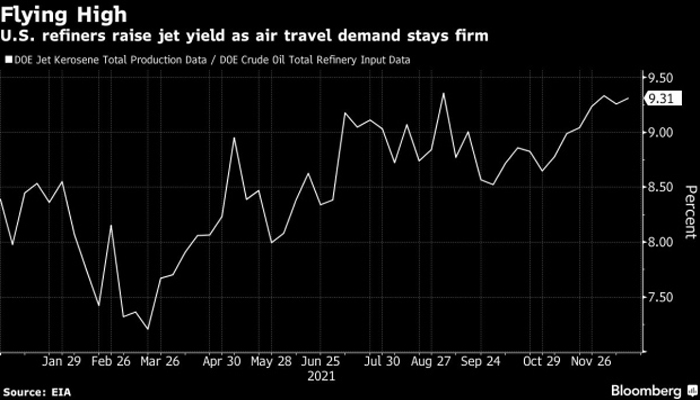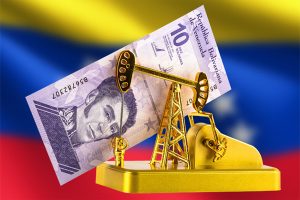Holiday travel patterns suggest sustained demand recovery

- Raising jet yield has benefit of avoiding costly credits
By Chunzi Xu / Bloomberg News
HOUSTON
EnergiesNet.com 12 22 2022
The last puzzle is falling into place for U.S. refiners to return to normal operating rates as air travel demand is showing signs of sustained recovery for the first time since the start of the pandemic.
Implied jet yield at U.S. refineries, or the percentage crude oil turned into jet fuel, has risen consistently since mid-November and is holing at 9% or higher, data from the U.S. Energy Information Administration show. Typically, about 10% or 11% of crude is used to make jet fuel.
Jet fuel has been the biggest laggard in the oil market’s recovery. For much of the pandemic, refiners were forced to limit how much crude they processed to avoid making jet fuel at a loss even as gasoline and diesel demand returned. Thanks to the steady return of air travel that trend is slowly reversing.
An average of 1.88 million passengers per day took to the air in the first 21 days of this month, more than double compared with the same period last year, according to the Transportation Security Administration. This is a continuation from strong November numbers, which also more than doubled from the year before.
AAA predicts 6.4 million passengers will travel by plane during Dec. 23 and Jan. 2, up from 2.3 million in 2020.
Raising jet fuel yields also allows U.S. refiners to get out of costly renewable credits applicable to diesel production under the federal Renewable Fuel Standard (RFS) program. Diesel and gasoline producers and importers must pay for credits if they’re unable to blend the required amount of biofuels. Credit prices have come off historic highs this summer but remain elevated compared with prior year levels.
Even with air travel increasing, the four-week average of U.S. jet fuel demand, at 1.5 million barrels per day last week, is about 16% below the same time in 2019, EIA data show.
______________________________________________
By Chunzi Xu from Bloomberg News
bloomberg.com 12 22 2021








